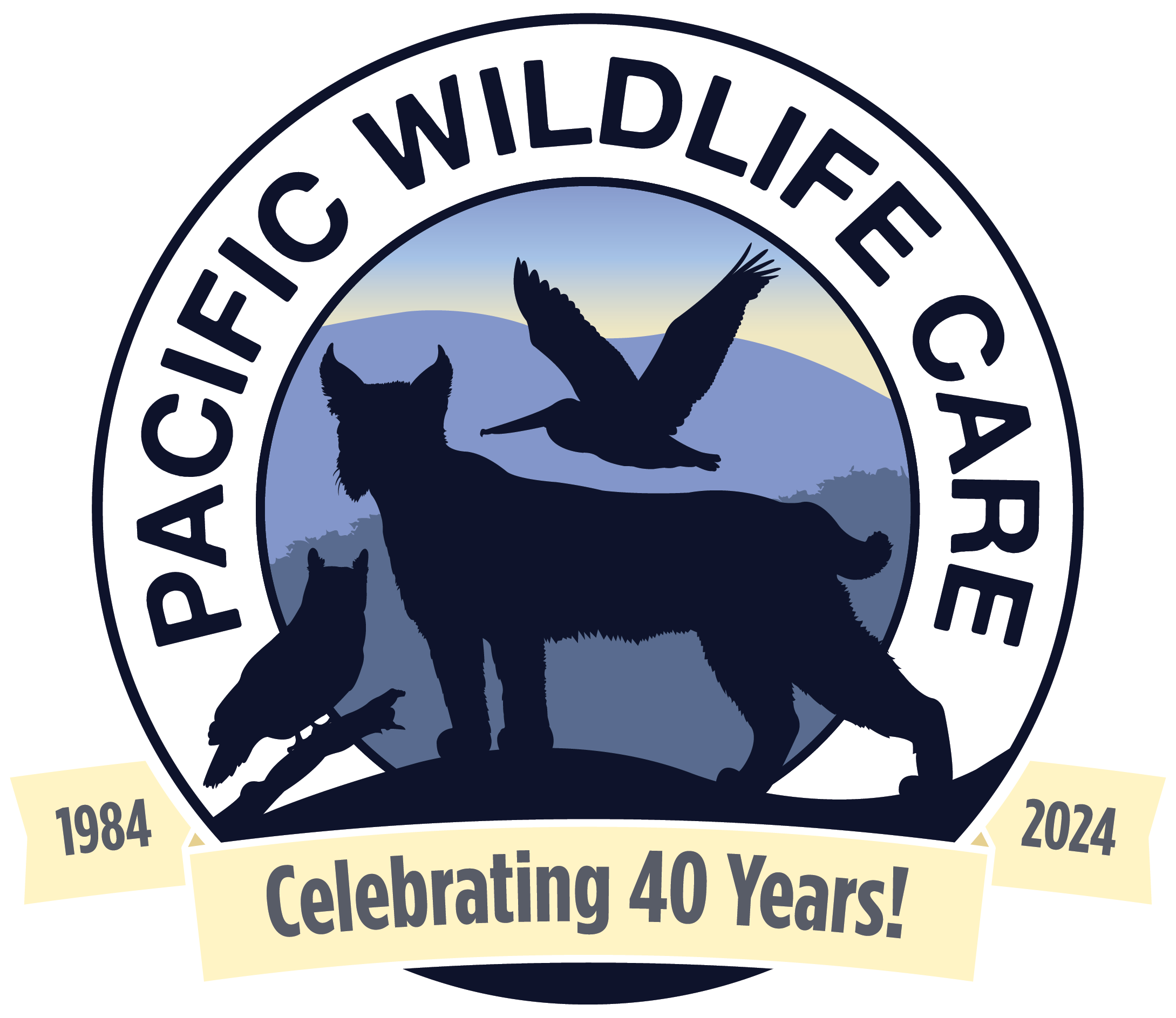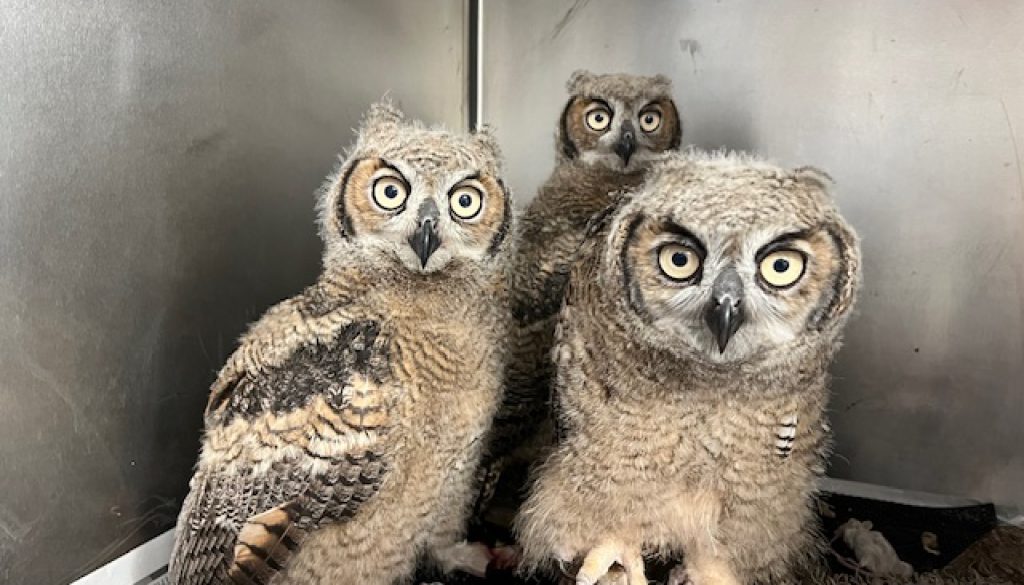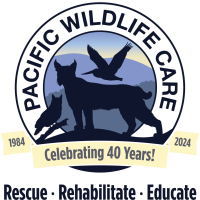Bringing Up Baby (Owls)
The surge of baby birds at PWC every spring and summer – beginning with raptors, followed soon by songbirds – inspires renewed appreciation for the work of avian parents. A case in point: two clutches of baby owls brought into the clinic in late March and early April.
Three baby Great Horned Owls (GHOWs), eyes not yet open, were victims of a fallen tree that had held their nest. Four baby Barn Owls (BANOs) were found on a hay bale where their mother had laid her eggs; babies and mother were separated when the hay bale was trucked to Templeton from Brawley
In the wild, owls are expert consumers of rodents (another reason, if we needed one, to avoid using rat poison). At the PWC clinic, raptors are fed thawed mice, which are swallowed whole by somewhat older, bigger owls. But the smallest nestlings need to be hand-fed their mice – gutted, skinned, cut up, and even deboned, initially.
Preparing food, feeding the owls, and cleaning their cages are labor-intensive, time-consuming tasks, made more so by the need for the caregiver to put on an awkward disguise when handling young GHOWs, who habituate quickly to humans. Comfort around humans would be a danger for the owls when eventually released back to the wild, so every effort is made to keep them wild and afraid of humans. (By contrast, no disguise is necessary when handling baby Barn Owls; even the youngest instinctively hates humans and expresses this loudly and fiercely.)
If it had been possible for these owls, PWC’s Reunite/Renest Team would have been called in, as it often is during baby season. Safely reuniting baby birds with a parent is always preferable to our fostering them at PWC. Their own parents do a better job than we can and (a bonus) save PWC from the expense of food and enormous amounts of time required of staff and volunteers, often already overwhelmed with tasks in baby season.
The Reunite/Renest “Team” more accurately consists of one intrepid member, Bob Peak, who is called on for both fledglings and nestlings, although a fledgling found on the ground beneath a tree probably does not need to be rescued. In a natural stage of development, when a bird is old enough to leave the nest (to fledge), it will spend several days on the ground, practicing flight and learning survival skills, while the parents continue to provide food. Occasionally, well-intentioned people seeing a fledgling on the ground will think it needs help. To avoid an unnecessary “rescue” that causes harm instead of help, the best action is simply to back away and keep dogs, cats, and other people away. These folks can keep watch from a distance, with binoculars if possible, to make sure the fledgling isn’t injured and that a parent returns to feed it.
However, in the case of a nestling, far too young to have left the nest, a rescuer is right to bring him to PWC. After a checkup that clears the bird for renesting, Peak first investigates the area, both to make sure it’s safe for the nestling and to figure out his logistics.
If the original nest is too high for Peak to reach, even with his tallest ladder, he creates a false nest. A plastic laundry basket serves well, lined with twigs and leaves. Peak carries it up the ladder and secures it to a branch, then carefully places the nestling inside, climbs back down, and backs away. He remains at a distance, often for hours, sometimes playing a recording of hungry babies of that species begging for food. When he is assured that the parents have found the baby and are bringing food, Peak packs up and heads off to his own home, knowing a call could come at any time for another renesting.
Pam Hartmann





